-
Posts
74 -
Joined
-
Last visited
Content Type
Profiles
Forums
Downloads
Posts posted by Shaunaflynn
-
-
On 1/3/2024 at 2:42 PM, Francisco Ruiz said:
Shortly after buying a CDP-S350, I started hungering the greater control over the sound of the Privia and Casio high-end models. The factory patches are terrific, but I wanted more reverb, softer hammers, more "I don't know what" (preferably said in French). But, alas! I was poor.
Then a friend gave me an old iPad mini, and Santa Claus dropped a Korg Nanokontrol2 down my chimney. Now I've got all of that nuance I was missing, plus some, courtesy of the CDP-S350 MIDI implementation.
In essence, the keyboard will not only send out notes through a cable connected to its USB-B port, but also will play when MIDI messages come in through that port. And not only notes, but also all kinds of codes that tweak the way the sound is produced. I can use the knobs and sliders of my Nanokontrol2, which is narrow enough to sit on top of the keyboard without impeding performance, to tweak reverb, attack time, chorus, everything, in real time.
Here's what you need:
1. USB-B to USB-A cable, as for a printer (likely you have that already).
2. USB hub (USB2 is enough because of the low bandwidth) with two or more ports.
3. iPad or iPhone. It can be very old because of the low bandwidth required. I think an Android device might work too, but I have not bothered to find the software that will do the magic.
4. "camera connection kit" to convert USB to the Lightning port of the iPad (Android will need a different adaptor).
5. App that will echo MIDI back to the input. I use MIDIflow, which costs a few bucks, but the free MIDI wrench works too. No idea what the app would be on Android.
6. MIDI control surface full of knobs and sliders, plus a few buttons. I got a Korg Nanokontrol2, but there's also a cheap Chinese one that might work just as well.
7. Obviously, a Casio keyboard with MIDI capability. Mine is a CDP-S350.
And here's what you do:
1. Program into the control surface the CC numbers for the features you want to control on your keyboard, on channel 1, associating hardware components (knobs, sliders, and buttons) to CC numbers. I am attaching the list, taken from the CDP-S350 MIDI implementation chart, at the end of this post. The Nanokontrol2 has a software that allows you to make any of its knobs etc. send CC messages for any number and any MIDI channel. Channel 1 is the main keyboard patch, without layering or split. You may want to put stickers next to each control, to remind yourself of what it does. A list is at the end of this post.
2. Mount it on your keyboard (I found the area left of the power button to work best for me, with some adhesive velcro), and attach a USB cable to it. Also attach a USB cable to the keyboard.
3. Connect both USB cables to the USB hub, and that to the iPad with the camera connection kit in-between.
4. Turn on the iPad and open the app. MIDIflow works by mapping an input to an output, so I run two paths, both on channel 1: one feeding the MIDI IN from the Casio keyboard to out to the same keyboard, the other feeding the MIDI from the Nanokontrol2 out to the Casio keyboard.
5. Go to the menu on the keyboard, MIDI section, and turn Local OFF. This will cause the sound to be produced only as a result of the MIDI messages coming in through the cable, and not directly from the keys. I found the delay caused by this process to be unnoticeable.
And that's it! Now your keyboard should be responsive to the knobs and sliders on the control surface. Your reverb can get much greater, as well as your chorus, and everything. You can make the attack so slow that a piano will sound like a violin. A lot of release time will cause notes to blend, pretty much like having a lot of internal resonance. Here are a few pictures of my setup, and below a table with the CC numbers that work on the CDP-S350
And here are the CC numbers:
CC number Action range
1 modulation 0-127
5 portamento time 0-127
7 volume 0-127
10 pan 0-127
11 expression 0-127
64 hold off/on 0,127 for a button
65 portamento off/on 0,127 for a button
66 sostenuto off/on 0,127 for a button
67 soft pedal off/on 0,127 for a button
68 legato off/on 0,127 for a button
71 filter resonance 0-127
72 release time 0-127
73 attack time 0-127
74 filtr cutoff 0-127
76 vibrato rate 0-127
77 vibrato depth 0-127
78 vibrato delay 0-12784 portamento control 0-127
91 reverb send 0-127
93 chorus send 0-127
94 delay send 0-127
120 all sound off 0 for a button
123 all notes off 0 for a button
126 mono mode 0 for a button
127 poly mode 1-127 for a buttonDo you post your work someplace?
-
On 12/28/2017 at 11:45 AM, Jokeyman123 said:
Seriously though, there is the closest approximation of a Highland pipe I've ever heard in the Ensoniq TS-12 which when I initially heard it struck me dumb. Why, I have no idea but it is there and it must have been a multi-sample since it sounds close to the multiple reed tones that come out of one of these beasts, there is a demo tune that uses it one one of the floppies it came with.
You need the bass drone, two tenor drones roughly a fifth from the fundamental and the chanter which spans (loosely) an octave-none of these will be exactly in tune with anything else. this is why you don't generally hear say a bagpipe/string quartet, woodwind ensemble or anything else. Maybe a tympani duo or a really good kazoo player. I know, I play one. Seriously. Now you know.
Sort of like playing an accordion that you have to blow into, but pump the bellows at the same time, and it will never be exactly in tune with anything else. Not for the faint-hearted. Certainly not if you have perfect pitch, you will go mad, i promise you. I usually can only play it for about fifteen minutes before I get nosebleeds, hypertension and vertigo. i like that though.....


But truly there is nothing so powerful as hearing a close-order drill of serious pipers inside. These used to be the front line in military battles, used to frighten the enemy. it is a formidable sound and I'm not joking there. Just maybe not on a PX5s.
That sounds like an incredibly challenging and experimental instrument! The combination of blowing into the accordion while pumping the bellows would definitely require a high level of coordination and skill. And the unpredictability of the tuning adds another layer of complexity.
-
On 4/12/2024 at 1:48 AM, Marcelo Queiroz said:
O link para download não está disponível??
Possibly.
-
Maybe that's just a guide.
-
15 hours ago, Brad Saucier said:
Did you forget we were having a conversation in another thread?
Oh Brad, thank you for reminding me, I think I overlooked that. We where talking about your recommendation on an entry level instrument right. I'm still doing my little research. Thanks a lot for your thoughtfulness!!!
-
Thank you for sharing.
-
Thank you for sharing.
-
Thank you for sharing.
-
On 11/16/2015 at 7:16 PM, tomson1355 said:
Hi BC,
My impressions of some tones: The Grand Piano Concert 001 is excellent. I like, generally, the EPs. They are better, by far, than the ones on my Rd-800. The jazz guitars are weak. The acoustic guitars sound typical of digital piano acoustic guitars. You wouldn't mistake them for real acoustic guitars. There are a lot of ethnic instruments. The accordion family instruments are surprisingly good. The acoustic bass is excellent, but I have a Yamaha HS10W sub hooked up at home, and that helps. But to me, it sounds like someone is inside the piano playing an acoustic bass.
I love the idea of a count off. I am able to do it on the Boss DR drum machine (not a voice. Claves.) and it works really well. I'd be happy with claves or drumsticks like the polka bands do, though a male British accent would be fun. Maybe there's a way, but I've only had this piano for 3 days, so I'm just scratching the surface, so far.
This is the first piano that I have bought in the last few years that I wasn't disappointed in when I first played it. I have a lot to learn to make it do the things I want it to do, but I'm optimistic. And it weighs about 30 pounds inside the Privia gig bag. That's 50 lbs less than the RD-800 in a hard Gator ATA case. Amazing.
Good luck. I don't care about synth programming, either.
Tom in NY
Sounds like you really enjoyed the Grand Piano Concert 001, especially the EPs and acoustic bass with your Yamaha sub. The accordion family instruments are surprisingly good, but the jazz guitars are weak as you mentioned. While the acoustic guitars sound typical for digital pianos, the addition of count-offs is a nice touch. They definitely improve after all these years if you could only get their latest work.
-
On 8/12/2015 at 8:05 PM, - T - said:
Showskter
You can not do what you want with the sustain pedal, as it affects all active tones at the same time - the Upper-1 layer, the Upper-2 layer, and the lower tones are all sustained at the same time by the sustain pedal. This is a major limitation with the sustain pedal on the CTK/WK models. BUT . . . what you describe sounds more like you are looking for a SPLIT function, rather than a LAYER function. With LAYER, what ever you do with EITHER hand affects BOTH layered tones simultaneously. You are wanting to do something different with each hand - lead guitar strums with your right hand and sustained accordion accompaniment with your left hand. This implies a SPLIT function. Try this - if LAYER is active, press the LAYER button momentarily to turn it off. Next, hold down the SPLIT button as you momentarily hit middle C on the keyboard. Everything below middle C will now be your left hand keys, and everything from middle C up will be your right hand keys. This only sets the SPLIT point. It does not turn SPLIT on. When SPLIT is not turned on, the top line of the display shows the right hand (UPPER-1) tone. Set this to your guitar tone. Now hit the SPLIT button momentarily to turn SPLIT on. When SPLIT is turned ON, the top line of the display shows the LOWER tone. Set this to your accordion tone. Play your guitar strums with your right hand and your accordion accompaniment with your left hand. As long as you keep your left hand keys pressed down, the accordion tone(s) will be sustained. If you would want the accordion tones to be sustained for a while after you raise your left hand, you would need to edit the tone to increase its RELEASE time and save it as a User Tone, then select that User Tone as your LOWER tone in the SPLIT.
Good luck !
Regards,
Ted
That sounds very complicated.
-
On 11/3/2015 at 1:06 AM, Null said:
Your daughter is a very lucky child. When I was her age and wanted to learn piano I was offered an accordion or one of those nasty little chord organs. I chose neither
 I waited til I turned 18 and bought myself a Yamaha Silver Plated Flute for my birthday. I couldn't afford a REAL synthesizer until I was well into my second childhood in my mid thirties.
I waited til I turned 18 and bought myself a Yamaha Silver Plated Flute for my birthday. I couldn't afford a REAL synthesizer until I was well into my second childhood in my mid thirties. 


I think the PX-150 is the better choice anyway. Your girl might prefer the CDP cause of all the nifty voices, but as you said, you can always hook up the PX-150 to a computer and use it to control soft synths or perhaps later on you'll shell out for a decent used rack module and have the best of all worlds.

Rock on!
Haha, it sounds like you've had quite the journey in your musical pursuits! It's wonderful that you eventually found your way to the instruments that resonated with you. Your daughter is indeed fortunate to have such thoughtful considerations in her musical journey. Who knows, maybe she'll inherit your love for synthesizers down the road!
-
On 5/31/2017 at 1:13 PM, Silvano Silva said:
Ok Brad!
I have no issues with editing loops and I have powerful editing tools.
What intrigues me too is this disappearance of notes from ZTN sounds.
If I place a new Sax soon it disappears the G # 4 of the accordion that also had installed.
I only put samples when the keyboard palette does not.
At most I always edit my sounds with the native keyboard tools.I'll create a Rhodes with loops Points and edit decay for testing.
Thank you.I'm pretty curious what was your solution.
-
On 3/1/2016 at 7:27 AM, CYBERYOGI =CO=Windler said:
Casio GZ-5 was unfortunately rather a disappointing joke than real midi keyboard (pitch/modulation wheels only simulate a button press).
http://weltenschule.de/TableHooters/Casio_GZ-5.html
Why does nobody make modern keyboards generally pressure (not velocity) sensitive?!
The ROLI Seaboard is e.g. an interesting tablet-like keyboard successor.
http://www.sweetwater.com/store/detail/SeaboardR-25
But to me piano-sized keys feel rather clumsy and not ergonomic at all. (How shall I reach multiple octaves with one hand?!). I never heard a button accordion player complaining that the bass buttons were too small, nor did secretaries complain about typewriters.) Something like the Bandstand or MusicFairy toy keyboards (with 61 Casio SA-1 sized mini keys) would feel more plausible to me.
http://www.ebay.de/itm/Elektronisches-Kinder-61-Tasten-Keyboard-Kinderkeyboard-Klavier-Mikrofon-Piano/361430271184
http://www.ebay.de/itm/Kinder-Piano-Keyboard-MQ-012FM-Klavier-Musikinstrument-61-Tasten-NEU-OVP-/201492983555
Perhaps the keys should have more depth or different spring tension than such toys (those even fail to sense polyphonic key presses by omitted matrix diodes), but piano size keys should be left for reproducing classic piano musics. Even the clavichord where composers like Bach or Mozart practised on had no "fullsize" keys, and many medieval church organs were more like a PortaSound or MicroKorg. The only thing with large (broom-stick-like) keys was the carillon; everything else was by modern terms rather midsize.
Exploring accordions with smaller keys or alternative layouts could offer a more comfortable playing experience. Models like diatonic or chromatic button accordions might suit your preferences better.
-
On 1/31/2016 at 12:25 AM, Silvano Silva said:
If you have to put sampler that gives user sounds will be very good. It has authentic instruments Brazil that everybody uses.I am seen in some video that has cavaquinho tambourine berimbal the MZ-X.
But still has the sounds of accordion Todeschini and Scandalli it is very necessary.
If the MZ does not sampler tone. I think it's a fusion of the WK with XW.
And the question is whether it has sampler and it can be added in Style.
Roland E-A7 has samplers with 4 layers create user.
Not everyone knows how to create samplers but who usually creates passes for the rest it does not create.

Adding a sampler feature to the MZ-X with authentic Brazilian instruments like cavaquinho, tambourine, berimbau, and classic accordion sounds from Todeschini and Scandalli would be a great addition. If the MZ-X doesn't have it, a fusion with WK and XW models might work.
-
On 7/18/2018 at 7:18 PM, CasioCTK said:
Hello,
I have problem with pad phrases. I want to save pad phrase with baritone sax tone which will be played during my normal playing accordion tone. When I choose Phrase Tone Enable, upper 1 tone immediately changes to baritone sax after tapping pad. If I choose Phrase Tone Disable, pad sound is accordion instead of baritone sax. What have I to do to get from pad every time that recorded tone regardless of my currently chosen upper 1 tone?Look for settings that let you choose the pad tone separately from the upper 1 tone. If available, select the baritone saxophone tone for the pad and save the setting. If not, consult the user manual or customer support for guidance.
-
On 10/25/2018 at 11:02 AM, SonnyDaye said:
All good points, Jokeyman!
Thanks!
I don’t have the PX-560. I've had the PX-5s since it first came out. Love it. Always hoped they’d come out with a 76 key version. ☹️
Any chance your TOUCHORG.ZLT would work on the PX-5s?
Having some experience with a relatively difficult instrument like an accordion does help improve your performance.
-
On 8/31/2019 at 8:10 PM, Jokeyman123 said:
Ah, right! I forgot some accordions may have buttons instead of piano/organ keys. I think this solves the mystery. Someone wanted to pla the CZ-101 like a button-style accordion. Still seems like an awkward arrangement. And since there are midi accordions already (very expensive, I have an older friend who has one) maybe this was a cheap way to have a more portable version of a midi accordion? The midi accordions are pretty heavy. But still, no control over the counter-bass without it, and the bellows which are used for dynamics, even with a digital accordion. And most of those have a pretty comprehensive set of sounds and auto-accompaniment features already. think Solton/Ketron and the expensive Italian-made that v=can go to 10,000 US dollars for a complete system-most serious pro players are already in pretty deep money-wise.still can't make sense of this weird Casio!
The CZ-101 is an uncommon choice for emulating a button-style accordion. And you're correct about the limitations compared to a MIDI accordion – the lack of control over counter-bass and dynamics with the bellows makes it seem like an odd workaround. But if that's what you have, then you got to work and make do with it.
-
On 2/20/2024 at 5:38 AM, Chas said:
Wait until you see how well a cello works with Death Metal!
The performance is jaw-dropping, but I think all it does acoustically is imitate a bass sound.
-
On 4/16/2019 at 11:36 PM, m10538 said:
HEAVY METAL BANJO!! YES!!😫! It actually works!
All I thought was that banjo and accordion belonged to country music, and I never realized they work well on Metal.
-
I can't hear the accordion you're talking about.
-
I think a digital accordion would be a better choice considering some accordion library sounds synthy(unless of course you create your own).
-
On 10/15/2019 at 7:30 PM, Jokeyman123 said:
And Astor originally played this on an accordion! I would be curious as to how they recorded the sound-look at the acoustic space here, definitely a plus. I think a few things when I listened. Articulation on fast passages-it is there. Balance throughout the octaves, again excellent. Dynamic response-maybe not quite there compared to a real grand in an acoustic space, but pretty impressive anyway. and this is coming through the (relatively) tiny built-in speakers? I knew the Privias can carry a good-sized room if there is no ambient noise, but I am more impressed with the clarity throughout the octaves in this space-but then look at this room! Proves that a Privia can be used to execute some pretty difficult musical passages, and with clarity and dynamic response. Nice post thanks.
Achieving clarity, balance, and dynamic response in a digital space, considering its a built-in speakers, is indeed impressive.
-
On 2/5/2024 at 11:22 PM, Cușlea_FM said:
Hi Shaunaflynn, and thank you for the feedback. Yes, the tone that I programmed has an overall dynamic far above compared to the dynamic of the CT-X Preset Tones or other User Tones that I have also tried until now. And yes, the combination of "Staccato / Spiccato" at the beginning followed after by "Crescendo" gives to this tone a special expressiveness, without using an expression/volume pedal.
I'm still not 100% satisfied by this tone in its current form, because it is a bit too strident, too harsh, and I'm still trying to fix this in the Filters section, but I'm undecided which configuration is more suitable and better. That's why it would be very helpful for me to be able to use the "Velocity to Filter Cutoff" (parameter at offset 085 in ToneTyrant editing software), but I couldn't do it, and I don't know if this effect is "turned on" in the underlying sample data, and if is there any way to activate it somehow.
In the DSP section can be done a lot of adjustments and improvements, but I try first to get the maximum of this tone, so in its raw state, without any DSP.
Your welcome, I know you have a challenging journey ahead and the best that I can do is wish you good luck.
-
On 2/1/2024 at 2:27 AM, Cușlea_FM said:
P.S. To understand better what accordion tone I want to achieve, I attaching these pe
The combination of "Staccato / Spiccato" at the beginning followed by a "Crescendo" creates such a dynamic effect.


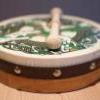
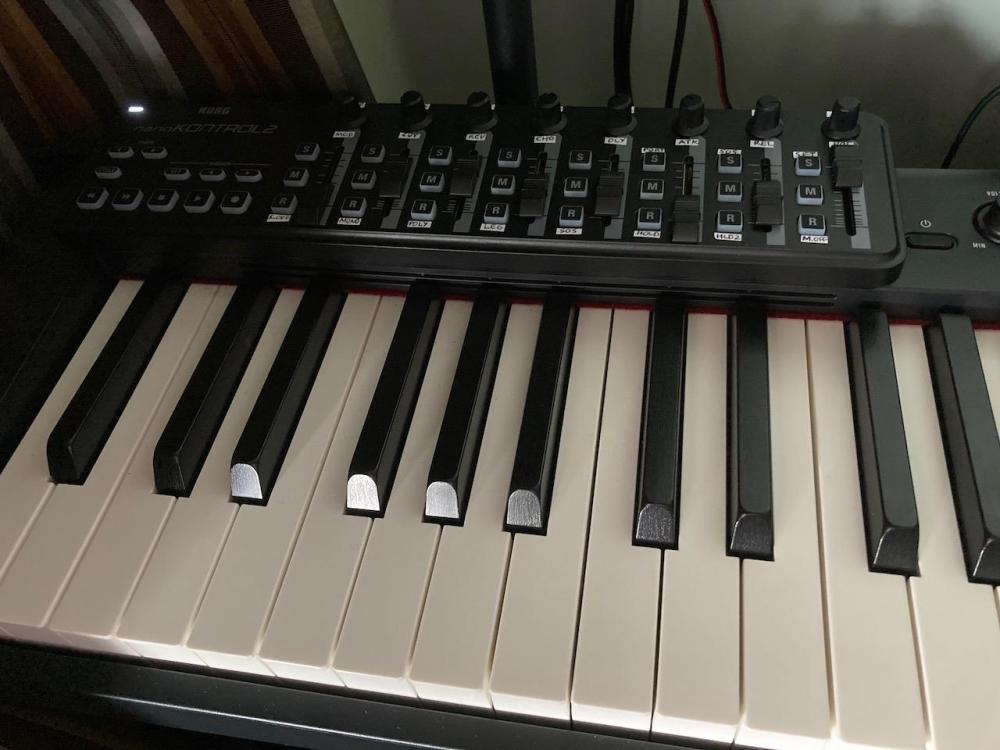
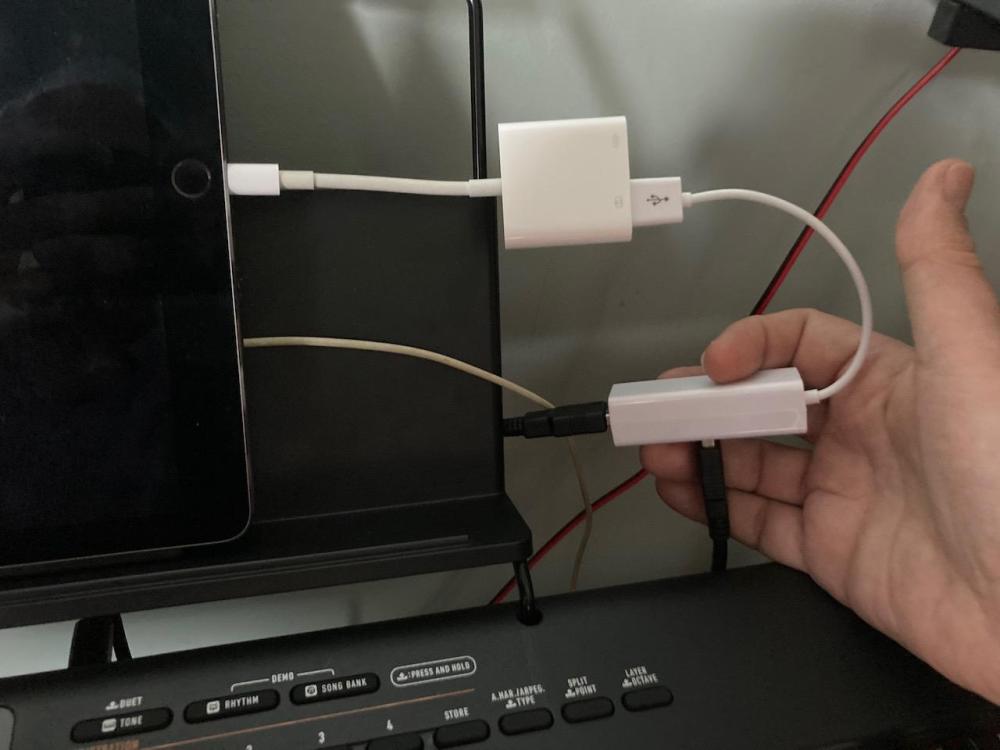
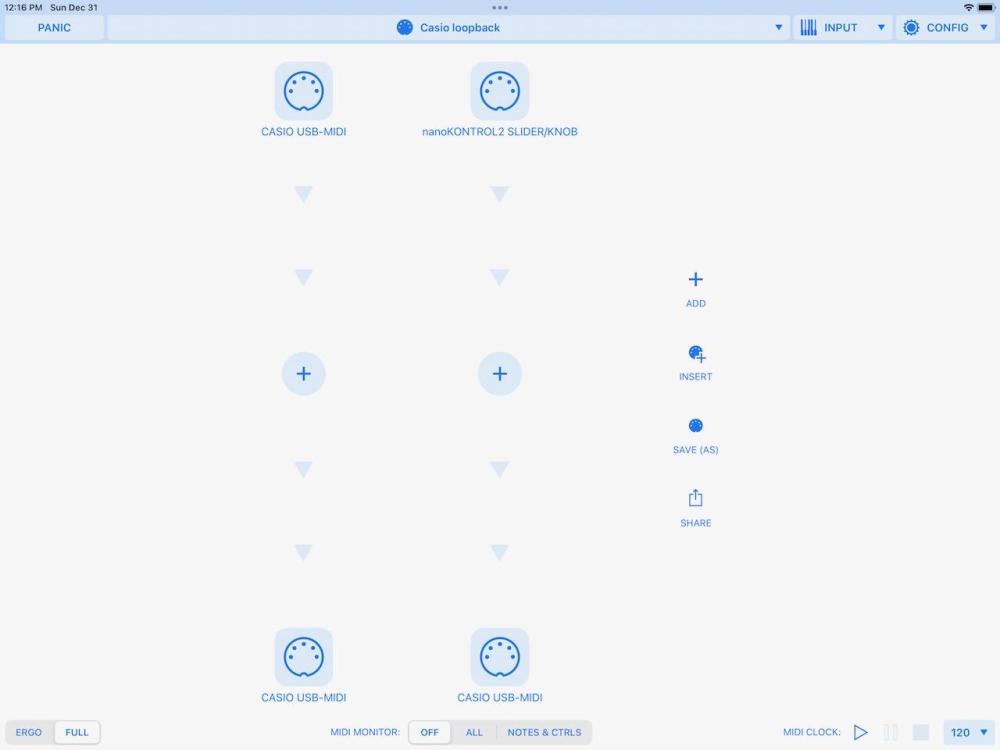
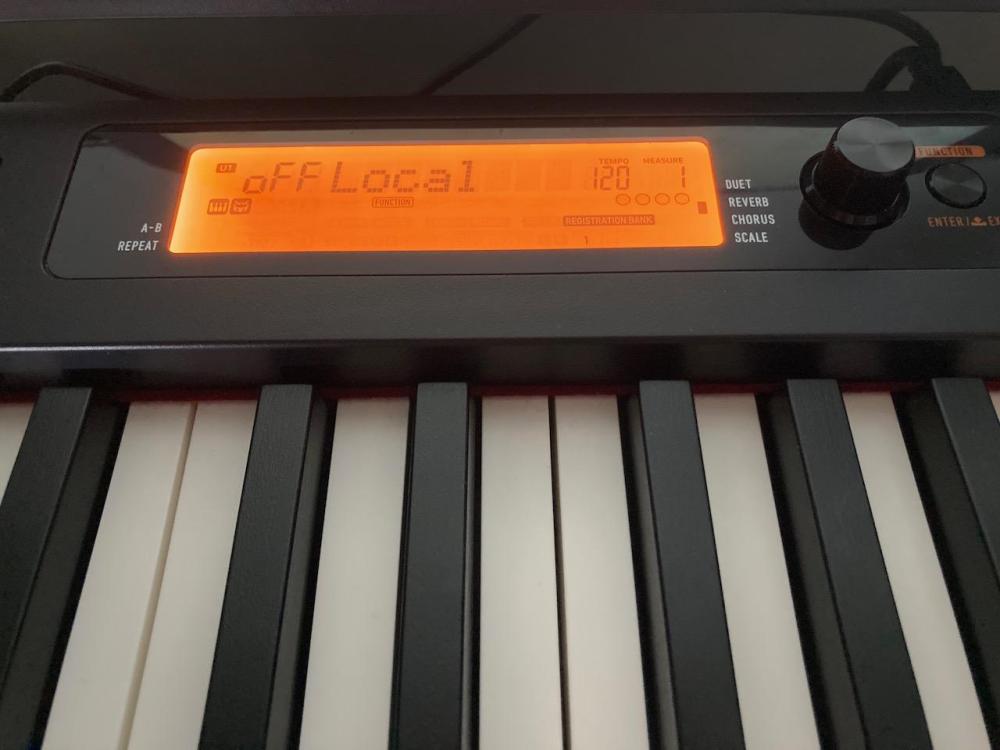
_0001.thumb.jpg.89da8173dcc62cdabbd4404044b4e137.jpg)
Casio SK8 versus casio SK5
in General Casio Discussion
Posted
This is a pretty neat comparison.